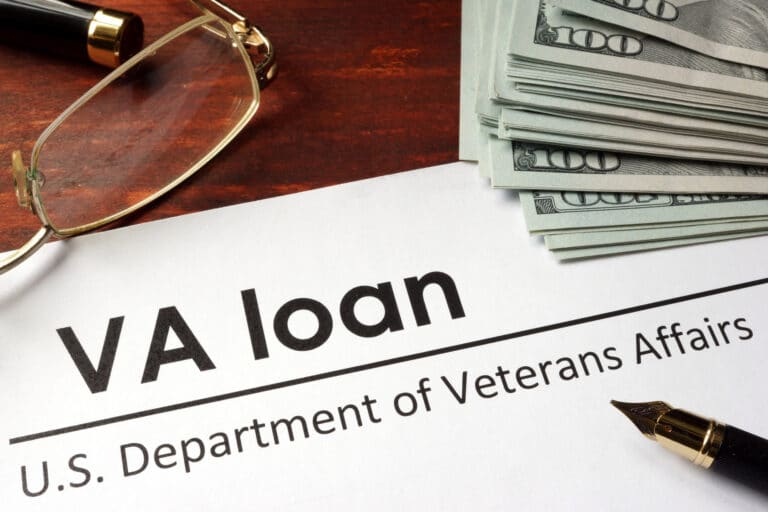
VA loan cap removed
VA loan limitations will be gone in 2020. Essentially, the VA mortgage program has improved. In high-cost metro areas, eliminating VA loan limitations makes housing more accessible for veterans. Even huge (by conventional standards) VA loans may now be available with no money down.
VA loan benefits with no loan limitations
Why would we say VA financing is the best option? Because it delivers a unique set of advantages.
1. No deposit
VA financing provides no-money-down. A qualifying vet purchasing a $300,000 house can obtain the whole $300,000. A normal loan with a 3% down needs $9,000, an FHA loan wants 3.5 percent down or $12,500, and a 5 percent down loan takes $15,000 upfront. This is in addition to closing expenses.
2. The VA guarantees loans.
An upfront VA funding fee is common. So they receive a zero-down loan with cheap rates and easy terms. The cost is determined by the vet’s service status, the amount borrowed, and whether the borrower is a first-time or recurrent borrower.
VA fee waivers
Not every borrower pays the charge.
- Veterans getting VA disability benefits.
- Individuals are eligible for compensation for service-connected impairments if not retired.
- Those entitled to benefits but not getting them owing to active duty.
- Veterans’ wives and children (whether or not such surviving spouses are veterans with their own entitlement and whether or not they are using their own entitlement on the loan).
3. VA generally beats FHA
Comparing the VA and FHA programs shows the VA’s edge. An FHA borrower must pay 1.75 percent upfront. The upfront FHA mortgage insurance payment (upfront MIP). A typical military borrower will pay 2.15 percent. The FHA program seems more appealing because of the cheaper upfront price. In this case, the FHA upfront MIP is $5,250. The vet will pay a $6,450 VA funding fee.
But the FHA borrower must additionally pay yearly mortgage insurance (MIP). The charge for a 30-year, $300,000 loan is $212.50. So $2,550/year or $25,500/ten years. What about the VA yearly fee? None. It’s not insurance. He saves several thousand dollars a year.
VA Loan Caps Ended
As usual in Washington, the repeal of the VA loan limit is a confusing mess. Here’s the short version:
Usually, the amount a vet can borrow is based on how much the government will guarantee. Before, this promise was worth $121,087. If you don’t pay back your VA loan, you have to pay back 25% of the total loan amount. Lenders let veterans borrow up to $484,350 because 25% of $484,350 is $121,087. This is the loan limit for Fannie Mae.
According to the National Association of Realtors, the average price of a home that was already on the market in May was $277,700. The national median house price might not always show where houses are expensive. In many places, a house costs a lot more than $484,350. There are more rules about getting a VA loan in San Francisco, Seattle, and New York. But it might not be high enough to buy a house in these wealthy areas.
In late June, the Blue Water Navy Vietnam Veterans Act took away the limit on how much you could borrow. The bill helps Navy veterans who served during the Vietnam War get perks that were only available to other service members before. It had nothing to do with politics. The House voted 410 to 0 to approve the bill. By a voice vote, the measure was passed. The law was signed by Trump on June 25, 2019.
Helping Veterans with VA Loans
With the new law, there are no longer any limits on VA loans. In cities where living costs are high, veterans can get big loans with no down payment. Before 2020, a 25% down payment was needed for a VA jumbo loan that was more than the maximum.
For example, a veteran who wants to buy a $600,000 home in a $500,000 neighborhood would have to put down 25% of the extra $100,000. That’s a deposit of $25,000. The new law says that the veteran can buy the same house with no down payment. This will save them thousands of dollars. Veterans no longer have to be afraid to look at more expensive homes, especially in expensive cities.
VA jumbo loan?
Is there a VA loan limit of $2 million now that there isn’t one? Say, $25 million? In theory, anyone who has enough income and credit may be able to qualify. Also, the property has to be worth at least as much as the loan. Even if they are eligible, the lender doesn’t have to give them the loan. Lenders could make their own rules that are stricter than the ones that are already in place. Even though the rules don’t say so, most VA lenders have a minimum credit score.
Even if the government doesn’t put limits on VA loans, lenders will. A lender could ask for $750,000, $1,000,000, or $5,000,000. For a VA loan of $25 million, the government is responsible for more than $6 million, or 25% of the loan. So lenders will limit how much risk they take. The VA loan secondary market still doesn’t know how super-jumbo VA loans will do. So, lenders set a cap on how much you can borrow. It says that VA loans can’t be sold to the Government National Mortgage Association (GNMA) unless certain conditions are met, but it doesn’t say what those conditions are. So there will be a lot for the lender to figure out.
Utilize your VA home loan
Veterans own more than 75% of their homes, significantly more than the national average. Why? Much depends on how beneficial VA loans are. With no down payment, veterans may now afford more homes.